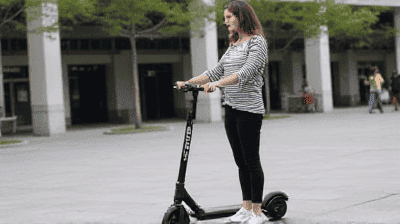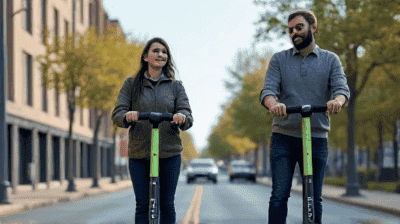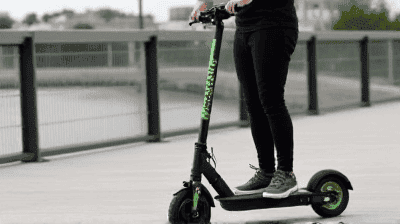
The emergence of electric scooters, or e-scooters, has transformed the urban mobility landscape in many cities around the globe. Promoted as a sustainable, convenient, and cost-effective means of transportation, e-scooters offer riders a quick way to navigate congested city streets. However, their rapid proliferation has raised questions about safety, regulation, and environmental impact.
E-scooters are lightweight, electric-powered scooters designed for short-distance travel. Typically, they are equipped with handlebars, a deck for standing, and wheels, similar to traditional scooters but with the addition of an electric motor. Riders can operate e-scooters using a throttle, and many models are designed for speeds ranging from 15 to 20 miles per hour, making them an efficient means of urban transport.
The introduction of e-scooter sharing services in major cities marked a significant shift in urban mobility options. Companies like Bird, Lime, and Spin launched dockless e-scooter platforms, allowing users to rent scooters through mobile apps. This model quickly gained popularity, offering users flexibility and a means to navigate urban environments without the commitments associated with vehicle ownership.
The convenience of e-scooter sharing has helped to reduce barriers to entry, making it easy for individuals to access electric mobility for short trips, whether commuting to work, running errands, or enjoying leisure activities.

One of the primary arguments in favor of e-scooters is their potential to reduce greenhouse gas emissions associated with urban transportation. By substituting car trips with e-scooter rides, cities can diminish reliance on fossil fuel-powered vehicles, thus lowering the overall carbon footprint.
E-scooters are more energy-efficient than conventional vehicles. According to studies, e-scooters consume significantly less energy per mile traveled compared to cars. This efficiency presents a viable option for reducing the environmental impact of urban commuting.
E-scooters function as effective last-mile solutions, bridging the gap between public transportation stops and final destinations. Users can take e-scooters to and from transit stations, ultimately encouraging increased use of public transport and reducing the number of single-passenger vehicles on the road.
E-scooters offer a low-cost transportation alternative for urban residents. Users typically pay a nominal fee for short rides, making e-scooters an attractive option for those who may find public transportation or car ownership to be cost-prohibitive. This affordability can also help low-income individuals access employment and educational opportunities.
E-scooters provide a flexible transportation option that can be utilized for short urban trips. Riders can pick up and drop off scooters in various locations, making them convenient for spontaneous travel. The reduced need for parking facilities also alleviates congestion in crowded urban areas.
Although e-scooters do not require physical exertion in the same way as traditional bicycles or walking, they encourage active transportation by making users more familiar with navigating urban environments. Increased exposure to both e-scooter and pedestrian infrastructure can promote a culture of multimodal transportation.
Despite the benefits e-scooters offer, their rapid adoption has sparked a range of concerns and controversies in urban environments. Understanding these challenges is crucial for evaluating the overall impact of e-scooters on cities.
One of the most prominent issues surrounding e-scooters is safety. Riders, pedestrians, and other road users can be involved in accidents that result in injuries. The speed at which e-scooters operate, coupled with a lack of protective gear for riders, has raised alarms about the risk of serious injuries.
Many urban areas lack the necessary infrastructure for safe e-scooter riding. Limited bike lanes and poorly designed roadways can lead to dangerous interactions between e-scooters and vehicles, posing risks for all users. This highlights the need for improved urban planning and investment in cycling infrastructure.
While e-scooters are promoted as environmentally friendly, concerns arise regarding the lifecycle impacts of their production and disposal:
Manufacturing Footprint: The production of e-scooters involves mining raw materials and manufacturing batteries, both of which generate carbon emissions and environmental harm. The environmental costs associated with the initial manufacturing phase must be considered in discussions of sustainability.
Battery Disposal: The disposal of lithium-ion batteries poses environmental challenges, as improper disposal can lead to pollution and hazardous waste. A lack of recycling infrastructure for batteries may further exacerbate this issue.
As e-scooters have proliferated, instances of scooters being abandoned or poorly parked have become increasingly common. This phenomenon, often referred to as "scooter litter," can create obstacles for pedestrians and lead to negative perceptions of e-scooter services. To mitigate this issue, companies must implement effective management strategies while cities work to improve urban design that accommodates shared mobility services.
The absence of comprehensive regulations governing e-scooter usage has left many municipalities struggling to find balance. Cities must develop appropriate policies regarding scooter speed limits, age restrictions for riders, and parking guidelines to address safety and clutter concerns.

As cities confront the challenges associated with urban mobility, the future of e-scooters will likely depend on thoughtful planning, regulation, and adaptation to urban infrastructure.
E-scooter services should be integrated into broader urban planning initiatives that incorporate dedicated bike lanes, pedestrian pathways, and public transportation nodes. Investing in safer infrastructure will create a more conducive environment for all types of transportation.
Establishing clear regulations will be crucial for minimizing risks associated with e-scooter use. This includes policies that manage speed limits, rider safety, and proper parking. Cities can collaborate with e-scooter companies to develop guidelines that promote responsible scooter use and address potential issues.
E-scooter companies collect vast amounts of data related to ridership patterns, peak usage times, and area demand. Municipalities can leverage this data to better understand mobility trends and inform urban planning decisions that cater to residents’ needs.
User education campaigns can empower riders to prioritize safety while using e-scooters. Initiatives that inform riders about helmet use, traffic laws, and proper parking practices can contribute to enhanced safety and a more responsible riding culture.
Cities worldwide have embarked on initiatives that showcase the strengths and challenges of e-scooter integration into urban mobility systems. Examining these case studies helps illuminate best practices and lessons learned.
San Francisco emerged as one of the first cities to adopt e-scooter sharing programs. The city implemented a pilot program to regulate e-scooter usage, requiring companies to apply for permits and adhere to criteria for safety and equitable access. The approach allowed the city to gather valuable data while addressing both safety concerns and the challenges of "scooter litter."
Paris is recognized for embracing e-scooters as part of its broader sustainable transportation goals. The city has expanded its cycling infrastructure, encouraging the use of e-scooters to complement public transport. However, concerns regarding safety and congestion have led to ongoing discussions about regulation and management, highlighting the need for balance in promoting e-scooter use.
Helsinki has integrated e-scooters into its Mobility as a Service (MaaS) platform, allowing users to plan their journeys across multiple transportation modes seamlessly. By combining e-scooter services with public transport, the city aims to create a sustainable and interconnected mobility ecosystem, alleviating pressure on individual vehicle ownership.

The rise of e-scooters has sparked considerable debate surrounding their role as a sustainable solution in urban mobility versus the challenges they present as urban nuisances. While e-scooters undoubtedly provide benefits such as reduced carbon emissions, cost-effectiveness, and increased accessibility, addressing safety concerns, environmental impacts, and regulatory frameworks is essential for their successful integration into urban landscapes.
As cities navigate the complexities of modern mobility, e-scooters have the potential to contribute positively to urban transportation. However, collaboration among policymakers, e-scooter companies, and communities will be critical in ensuring that e-scooters enhance rather than detract from the urban experience. By embracing a holistic approach to urban transportation that prioritizes safety, infrastructure investment, and data-driven decision-making, cities can harness the full potential of e-scooters as a robust component of sustainable urban mobility.